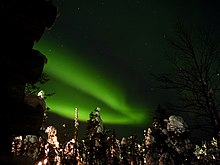Tourism
Tourism is travel for pleasure or business; also the theory and practice of touring, the business of attracting, accommodating, and entertaining tourists, and the business of operating tours.[2] The World Tourism Organization defines tourism more generally, in terms which go "beyond the common perception of tourism as being limited to holiday activity only", as people "traveling to and staying in places outside their usual environment for not more than one consecutive year for leisure and not less than 24 hours, business and other purposes".[3]
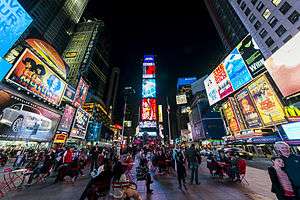
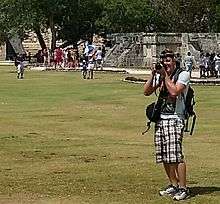
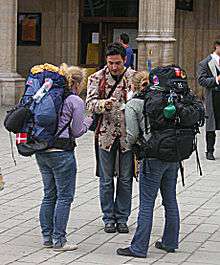
Tourism can be domestic (within the traveller's own country) or international, and international tourism has both incoming and outgoing implications on a country's balance of payments.
Tourism numbers declined as a result of a strong economic slowdown (the late-2000s recession) between the second half of 2008 and the end of 2009, and in consequence of the outbreak of the 2009 H1N1 influenza virus,[4][5] but slowly recovered. Globally, international tourism receipts (the travel item in balance of payments) grew to US$1.03 trillion (€740 billion) in 2005, corresponding to an increase in real terms of 3.8% from 2010.[6] International tourist arrivals surpassed the milestone of 1 billion tourists globally for the first time in 2012,[7] emerging source markets such as China, Russia, and Brazil had significantly increased their spending over the previous decade.[8] The ITB Berlin is the world's leading tourism trade-fair.[9] Global tourism accounts for c. 8% of global greenhouse-gas emissions.[10]
Etymology
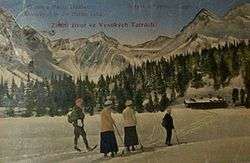
The word tourist was used in 1772[11] and tourism in 1811.[12] It is formed from the word tour, which is derived from Old English turian, from Old French torner, from Latin tornare; 'to turn on a lathe,' which is itself from Ancient Greek tornos (τόρνος); 'lathe'.[13]
Basis
The economic foundations of tourism are essentially the cultural assets, the cultural property and the nature of the travel location. The World Heritage Sites are particularly worth mentioning today because they are real tourism magnets. But even a country's current or former form of government can be decisive for tourism. For example, the fascination of the British royal family brings millions of tourists to Great Britain every year and thus the economy around £550 million a year. The Habsburg family can be mentioned in Central Europe. According to estimates, the Habsburg brand should generate tourism sales of 60 million euros per year for Vienna alone. The tourist principle "Habsburg sells" applies.[14][15]
Significance of tourism
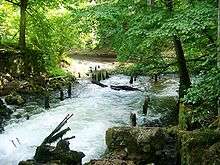
.jpg)
.jpg)
The tourism industry, as part of the service sector,[16] has become an important source of income for many regions and even for entire countries. The Manila Declaration on World Tourism of 1980 recognized its importance as "an activity essential to the life of nations because of its direct effects on the social, cultural, educational, and economic sectors of national societies, and on their international relations."[3][17]
Tourism brings large amounts of income into a local economy in the form of payment for goods and services needed by tourists, accounting as of 2011 for 30% of the world's trade in services, and, as an invisible export, for 6% of overall exports of goods and services.[6] It also generates opportunities for employment in the service sector of the economy associated with tourism.[18]
The hospitality industries which benefit from tourism include transportation services (such as airlines, cruise ships, trains and taxicabs); lodging (including hotels, hostels, homestays, resorts and renting out rooms); and entertainment venues (such as amusement parks, restaurants, casinos, shopping malls, music venues, and theatres). This is in addition to goods bought by tourists, including souvenirs.
On the flip-side, tourism can degrade people[19] and sour relationships between host and guest.[20]
Definitions
In 1936, the League of Nations defined a foreign tourist as "someone traveling abroad for at least twenty-four hours". Its successor, the United Nations, amended this definition in 1945, by including a maximum stay of six months.[22]
In 1941, Hunziker and Kraft defined tourism as "the sum of the phenomena and relationships arising from the travel and stay of non-residents, insofar as they do not lead to permanent residence and are not connected with any earning activity."[23][24] In 1976, the Tourism Society of England's definition was: "Tourism is the temporary, short-term movement of people to destinations outside the places where they normally live and work and their activities during the stay at each destination. It includes movements for all purposes."[25] In 1981, the International Association of Scientific Experts in Tourism defined tourism in terms of particular activities chosen and undertaken outside the home.[26]
In 1994, the United Nations identified three forms of tourism in its Recommendations on Tourism Statistics:[27]
- Domestic tourism, involving residents of the given country traveling only within this country
- Inbound tourism,[28] involving non-residents traveling in the given country
- Outbound tourism, involving residents traveling in another country
The terms tourism and travel are sometimes used interchangeably. In this context, travel has a similar definition to tourism but implies a more purposeful journey. The terms tourism and tourist are sometimes used pejoratively, to imply a shallow interest in the cultures or locations visited. By contrast, traveler is often used as a sign of distinction. The sociology of tourism has studied the cultural values underpinning these distinctions and their implications for class relations.[29]
World tourism statistics and rankings
Total volume of cross-border tourist travel
International tourist arrivals reached 1.035 billion in 2012, up from over 996 million in 2011, and 952 million in 2010.[7] In 2011 and 2012, international travel demand continued to recover from the losses resulting from the late-2000s recession, where tourism suffered a strong slowdown from the second half of 2008 through the end of 2009. After a 5% increase in the first half of 2008, growth in international tourist arrivals moved into negative territory in the second half of 2008, and ended up only 2% for the year, compared to a 7% increase in 2007.[4] The negative trend intensified during 2009, exacerbated in some countries due to the outbreak of the H1N1 influenza virus, resulting in a worldwide decline of 4.2% in 2009 to 880 million international tourists arrivals, and a 5.7% decline in international tourism receipts.[5]
World's top tourism destinations
The World Tourism Organization reports the following ten destinations as the most visited in terms of the number of international travelers in 2019.[30]
| Rank | Country | UNWTO Region [31] |
International tourist arrivals (2019) [30] |
|---|---|---|---|
| 1 | Europe | 90,2 million | |
| 2 | Europe | 83,8 million | |
| 3 | North America | 78,7 million | |
| 4 | Asia | 67,5 million | |
| 5 | Europe | 64,6 million | |
| 6 | Asia, Europe | 52,5 million | |
| 7 | North America | 44,9 million | |
| 8 | Asia | 39,7 million | |
| 9 | Europe | 39,4 million | |
| 10 | Europe | 36,9 million | |
| 11 | Asia | 32,1 million | |
| 12 | Europe | 31,7 million | |
| 13 | Europe | 31,2 million | |
| 14 | Asia | 26,8 million | |
| 15 | Europe, Asia | 24,4 million | |
| 16 | Europe | 24,3 million | |
| 17 | Asia | 23,8 million | |
| 18 | North America | 22,2 million | |
| 19 | Europe | 21,4 million | |
| 20 | Europe | 20,2 million |
International tourism receipts
The World Tourism Organization reports that international tourism receipts were US$1.7 trillion in 2018, an increase in real terms of 4% over 2017.[30] The top ten tourism earners in 2018 were:
| Rank | Country/Area | UNWTO Region [31] |
International tourism receipts (2018)[30] |
|---|---|---|---|
| 1 | North America | $214 billion | |
| 2 | Europe | $74 billion | |
| 3 | Europe | $67 billion | |
| 4 | Asia | $63 billion | |
| 5 | Europe | $52 billion | |
| 6 | Europe | $49 billion | |
| 7 | Asia-Pacific | $45 billion | |
| 8 | Europe | $43 billion | |
| 9 | Asia | $41 billion | |
| 10 | Asia | $40 billion | |
International tourism expenditure
The World Tourism Organization reports the following countries as the ten biggest spenders on international tourism for the year 2018.[30]
| Rank | Country | UNWTO Region [31] |
International tourism expenditure (2018)[30] |
|---|---|---|---|
| 1 | Asia | $277 billion | |
| 2 | North America | $144 billion | |
| 3 | Europe | $94 billion | |
| 4 | Europe | $76 billion | |
| 5 | Europe | $48 billion | |
| 6 | Oceania | $37 billion | |
| 7 | Europe | $35 billion | |
| 8 | North America | $33 billion | |
| 9 | Asia | $32 billion | |
| 10 | Europe | $30 billion | |
Euromonitor International Top City Destinations Ranking
Euromonitor International rated these the world's most visited cities by international tourists in 2017:[32]
| Rank | City | Country | International tourist arrivals[33] |
|---|---|---|---|
| 1 | Hong Kong | 27.88 million | |
| 2 | Bangkok | 22.45 million | |
| 3 | London | 19.82 million | |
| 4 | Singapore | 17.61 million | |
| 5 | Macau | 17.33 million | |
| 6 | Paris | 15.83 million | |
| 7 | Dubai | 15.79 million | |
| 8 | New York City | 13.10 million | |
| 9 | Kuala Lumpur | 12.84 million | |
| 10 | Shenzhen | 12.07 million | |
World Travel and Tourism Council
| Rank | Country | Percentage |
|---|---|---|
| 1 | 73.5% | |
| 2 | 49.8% | |
| 3 | 36.4% | |
| 4 | 34.1% | |
| 5 | 30.1% | |
| 6 | 26.4% | |
| 7 | 25.5% | |
| 8 | 22.7% | |
| 9 | 20.0% | |
| 10 | 19.5% |
| Rank | Country | Percentage |
|---|---|---|
| 1 | 46.1% | |
| 2 | 24.4% | |
| 3 | 20.1% | |
| 4 | 15.4% | |
| 5 | 15.2% | |
| 6 | 14.2% | |
| 7 | 12.1% | |
| 8 | 11.2% | |
| 9 | 10.7% | |
| 10 | 10.7% |
History
Antiquity
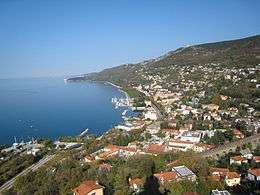
Travel outside a person's local area for leisure was largely confined to wealthy classes, who at times traveled to distant parts of the world, to see great buildings and works of art, learn new languages, experience new cultures, enjoy pristine scenery and to taste different cuisines. As early as Shulgi, however, kings praised themselves for protecting roads and building way stations for travelers.[36] Travelling for pleasure can be seen in Egypt as early on as 1500 BC.[37] During the Roman Republic, spas and coastal resorts such as Baiae were popular among the rich. The Roman upper class used to spend their free time on land or at sea and traveled to their Villa urbana or Villa maritima. Numerous villas were located in Campania, around Rome and in the northern part of the Adriatic as in Barcola near Trieste. Pausanias wrote his Description of Greece in the second century AD. In ancient China, nobles sometimes made a point of visiting Mount Tai and, on occasion, all five Sacred Mountains.
Middle Ages
By the Middle Ages, Christianity and Buddhism and Islam had traditions of pilgrimage. Chaucer's Canterbury Tales and Wu Cheng'en's Journey to the West remain classics of English and Chinese literature.
.jpg)
The 10th- to 13th-century Song dynasty also saw secular travel writers such as Su Shi (11th century) and Fan Chengda (12th century) become popular in China. Under the Ming, Xu Xiake continued the practice.[38] In medieval Italy, Francesco Petrarch also wrote an allegorical account of his 1336 ascent of Mount Ventoux that praised the act of traveling and criticized frigida incuriositas ("cold lack of curiosity"). The Burgundian poet Michault Taillevent later composed his own horrified recollections of a 1430 trip through the Jura Mountains.[39]
Grand Tour
Modern tourism can be traced to what was known as the Grand Tour, which was a traditional trip around Europe (especially Germany and Italy), undertaken by mainly upper-class European young men of means, mainly from Western and Northern European countries. In 1624, young Prince of Poland, Ladislaus Sigismund Vasa, the eldest son of Sigismund III, embarked for a journey across Europe, as was in custom among Polish nobility.[40] He travelled through territories of today's Germany, Belgium, the Netherlands, where he admired the Siege of Breda by Spanish forces, France, Switzerland to Italy, Austria, and the Czech Republic.[40] It was an educational journey[41] and one of the outcomes was introduction of Italian opera in the Polish–Lithuanian Commonwealth.[42]
The custom flourished from about 1660 until the advent of large-scale rail transit in the 1840s and generally followed a standard itinerary. It was an educational opportunity and rite of passage. Though primarily associated with the British nobility and wealthy landed gentry, similar trips were made by wealthy young men of Protestant Northern European nations on the Continent, and from the second half of the 18th century some South American, US, and other overseas youth joined in. The tradition was extended to include more of the middle class after rail and steamship travel made the journey easier, and Thomas Cook made the "Cook's Tour" a byword.
The Grand Tour became a real status symbol for upper-class students in the 18th and 19th centuries. In this period, Johann Joachim Winckelmann's theories about the supremacy of classic culture became very popular and appreciated in the European academic world. Artists, writers, and travelers (such as Goethe) affirmed the supremacy of classic art of which Italy, France, and Greece provide excellent examples. For these reasons, the Grand Tour's main destinations were to those centers, where upper-class students could find rare examples of classic art and history.
The New York Times recently described the Grand Tour in this way:
Three hundred years ago, wealthy young Englishmen began taking a post-Oxbridge trek through France and Italy in search of art, culture and the roots of Western civilization. With nearly unlimited funds, aristocratic connections and months (or years) to roam, they commissioned paintings, perfected their language skills and mingled with the upper crust of the Continent.
— Gross, Matt., Lessons From the Frugal Grand Tour." New York Times 5 September 2008.
The primary value of the Grand Tour, it was believed, laid in the exposure both to the cultural legacy of classical antiquity and the Renaissance, and to the aristocratic and fashionably polite society of the European continent.
Emergence of leisure travel
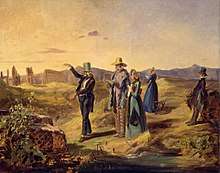
Leisure travel was associated with the Industrial Revolution in the United Kingdom – the first European country to promote leisure time to the increasing industrial population.[43] Initially, this applied to the owners of the machinery of production, the economic oligarchy, factory owners and traders. These comprised the new middle class.[43] Cox & Kings was the first official travel company to be formed in 1758.[44]
The British origin of this new industry is reflected in many place names. In Nice, France, one of the first and best-established holiday resorts on the French Riviera, the long esplanade along the seafront is known to this day as the Promenade des Anglais; in many other historic resorts in continental Europe, old, well-established palace hotels have names like the Hotel Bristol, Hotel Carlton, or Hotel Majestic – reflecting the dominance of English customers.

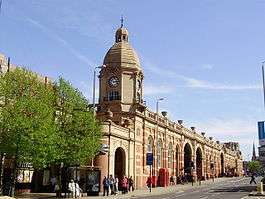
A pioneer of the travel agency business, Thomas Cook's idea to offer excursions came to him while waiting for the stagecoach on the London Road at Kibworth. With the opening of the extended Midland Counties Railway, he arranged to take a group of 540 temperance campaigners from Leicester Campbell Street station to a rally in Loughborough, eleven miles (18 km) away. On 5 July 1841, Thomas Cook arranged for the rail company to charge one shilling per person; this included rail tickets and food for the journey. Cook was paid a share of the fares charged to the passengers, as the railway tickets, being legal contracts between company and passenger, could not have been issued at his own price. This was the first privately chartered excursion train to be advertised to the general public; Cook himself acknowledged that there had been previous, unadvertised, private excursion trains.[45] During the following three summers he planned and conducted outings for temperance societies and Sunday school children. In 1844, the Midland Counties Railway Company agreed to make a permanent arrangement with him, provided he found the passengers. This success led him to start his own business running rail excursions for pleasure, taking a percentage of the railway fares.[46]
In 1855, he planned his first excursion abroad, when he took a group from Leicester to Calais to coincide with the Paris Exhibition. The following year he started his "grand circular tours" of Europe.[47] During the 1860s he took parties to Switzerland, Italy, Egypt, and the United States. Cook established "inclusive independent travel", whereby the traveler went independently but his agency charged for travel, food, and accommodation for a fixed period over any chosen route. Such was his success that the Scottish railway companies withdrew their support between 1862 and 1863 to try the excursion business for themselves.
Tourism, cultural heritage and UNESCO
Cultural and natural heritage are in many cases the absolute basis for worldwide tourism. Cultural tourism is one of the megatrends that is reflected in massive numbers of overnight stays and sales. As UNESCO is increasingly observing, the cultural heritage is needed for tourism, but also endangered by it. The "ICOMOS - International Cultural Tourism Charter" from 1999 is already dealing with all of these problems. As a result of the tourist hazard, for example, the Lascaux cave was rebuilt for tourists. Overtourism is an important buzzword in this area. Furthermore, the focus of UNESCO in war zones is to ensure the protection of cultural heritage in order to maintain this future important economic basis for the local population. And there is intensive cooperation between UNESCO, the United Nations, the United Nations peacekeeping and Blue Shield International. There are extensive international and national considerations, studies and programs to protect cultural assets from the effects of tourism and those from war. In particular, it is also about training civilian and military personnel. But the involvement of the locals is particularly important. The president of Blue Shield International Karl von Habsburg summed it up with the words: “Without the local community and without the local participants, that would be completely impossible”.[48][49][50][51]
Cruise shipping
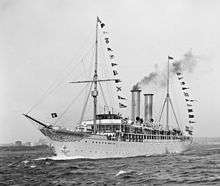
Cruising is a popular form of water tourism. Leisure cruise ships were introduced by the Peninsular & Oriental Steam Navigation Company (P&O) in 1844, sailing from Southampton to destinations such as Gibraltar, Malta and Athens.[52] In 1891, German businessman Albert Ballin sailed the ship Augusta Victoria from Hamburg into the Mediterranean Sea. 29 June 1900 saw the launching of the first purpose-built cruise ship was Prinzessin Victoria Luise, built in Hamburg for the Hamburg America Line.[53]
Modern day tourism
Many leisure-oriented tourists travel to seaside resorts on their nearest coast or further afield. Coastal areas in the tropics are popular in both summer and winter.
Mass tourism

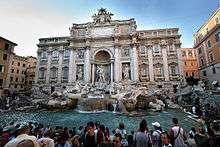
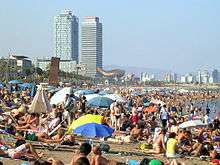
Academics have defined mass tourism as travel by groups on pre-scheduled tours, usually under the organization of tourism professionals.[54] This form of tourism developed during the second half of the 19th century in the United Kingdom and was pioneered by Thomas Cook. Cook took advantage of Europe's rapidly expanding railway network and established a company that offered affordable day trip excursions to the masses, in addition to longer holidays to Continental Europe, India, Asia and the Western Hemisphere which attracted wealthier customers. By the 1890s over 20,000 tourists per year used Thomas Cook & Son.[55]
The relationship between tourism companies, transportation operators and hotels is a central feature of mass tourism. Cook was able to offer prices that were below the publicly advertised price because his company purchased large numbers of tickets from railroads.[55] One contemporary form of mass tourism, package tourism, still incorporates the partnership between these three groups.
Travel developed during the early 20th century and was facilitated by the development of the automobiles and later by airplanes. Improvements in transport allowed many people to travel quickly to places of leisure interest so that more people could begin to enjoy the benefits of leisure time.
In Continental Europe, early seaside resorts included: Heiligendamm, founded in 1793 at the Baltic Sea, being the first seaside resort; Ostend, popularised by the people of Brussels; Boulogne-sur-Mer and Deauville for the Parisians; Taormina in Sicily. In the United States, the first seaside resorts in the European style were at Atlantic City, New Jersey and Long Island, New York.
By the mid-20th century, the Mediterranean Coast became the principal mass tourism destination. The 1960s and 1970s saw mass tourism play a major role in the Spanish economic "miracle".
Niche tourism
.jpg)
Niche tourism refers to the numerous specialty forms of tourism that have emerged over the years, each with its own adjective. Many of these terms have come into common use by the tourism industry and academics.[56] Others are emerging concepts that may or may not gain popular usage. Examples of the more common niche tourism markets are:
- Agritourism
- Birth tourism
- Culinary tourism
- Cultural tourism
- Dark tourism (also called "black tourism" or "grief tourism")
- Eco tourism
- Extreme tourism
- Geotourism
- Heritage tourism
- LGBT tourism
- Medical tourism
- Film tourism
- Nautical tourism
- Pop-culture tourism
- Religious tourism
- Sex tourism
- Slum tourism
- Sports tourism
- Textile tourism
- Virtual tourism
- War tourism
- Wellness tourism
- Wildlife tourism
Other terms used for niche or specialty travel forms include the term "destination" in the descriptions, such as destination weddings, and terms such as location vacation.
Winter tourism
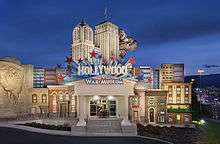
St. Moritz, Switzerland became the cradle of the developing winter tourism in the 1860s: hotel manager Johannes Badrutt invited some summer guests from England to return in the winter to see the snowy landscape, thereby inaugurating a popular trend.[57][58] It was, however, only in the 1970s when winter tourism took over the lead from summer tourism in many of the Swiss ski resorts. Even in winter, up to one third of all guests (depending on the location) consist of non-skiers.[59]
Major ski resorts are located mostly in the various European countries (e.g. Andorra, Austria, Bulgaria, Bosnia-Herzegovina, Croatia, Czech Republic, Cyprus, Finland, France, Germany, Greece, Iceland, Italy, Norway, Latvia, Lithuania, Poland, Romania, Serbia, Sweden, Slovakia, Slovenia, Spain, Switzerland, Turkey), Canada, the United States (e.g. Montana, Utah, Colorado, California, Wyoming, Vermont, New Hampshire, New York) Argentina, New Zealand, Japan, South Korea, Chile, and Lebanon.
Recent developments
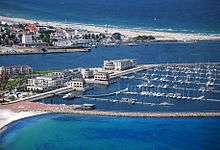
.jpg)
There has been an up-trend in tourism over the last few decades, especially in Europe, where international travel for short breaks is common. Tourists have a wide range of budgets and tastes, and a wide variety of resorts and hotels have developed to cater for them. For example, some people prefer simple beach vacations, while others want more specialized holidays, quieter resorts, family-oriented holidays, or niche market-targeted destination hotels.
The developments in air transport infrastructure, such as jumbo jets, low-cost airlines, and more accessible airports have made many types of tourism more affordable. A major factor in the relatively low cost of air travel is the tax exemption for aviation fuels. The WHO estimated in 2009 that there are around half a million people on board aircraft at any given time.[60] There have also been changes in lifestyle, for example, some retirement-age people sustain year-round tourism. This is facilitated by internet sales of tourist services. Some sites have now started to offer dynamic packaging, in which an inclusive price is quoted for a tailor-made package requested by the customer upon impulse.
There have been a few setbacks in tourism, such as the September 11 attacks and terrorist threats to tourist destinations, such as in Bali and several European cities. Also, on 26 December 2004, a tsunami, caused by the 2004 Indian Ocean earthquake, hit the Asian countries on the Indian Ocean, including the Maldives. Thousands of lives were lost including many tourists. This, together with the vast clean-up operations, stopped or severely hampered tourism in the area for a time.[61]
Individual low-price or even zero-price overnight stays have become more popular in the 2000s, especially with a strong growth in the hostel market and services like CouchSurfing and airbnb being established.[62] There has also been examples of jurisdictions wherein a significant portion of GDP is being spent on altering the primary sources of revenue towards tourism, as has occurred for instance in Dubai.[63]
Sustainable tourism
"Sustainable tourism is envisaged as leading to management of all resources in such a way that economic, social and aesthetic needs can be fulfilled while maintaining cultural integrity, essential ecological processes, biological diversity and life support systems." (World Tourism Organization)[64]
Sustainable development implies "meeting the needs of the present without compromising the ability of future generations to meet their own needs." (World Commission on Environment and Development, 1987)[65]
An important part of sustainable tourism is something known as the three pillars of sustainability which include Economic, Environmental/Ecological and Socio-cultural. For a destination to be truly sustainable it must have an equal balance among the three pillars. Economic is in relation to money and making and maintaining a certain amount of cash. Environmental is of course in relation to the environment it looks into whether the local ecosystems can support the influx of visitors and also how these visitors affect the ecosystem. Then finally Socio-cultural is about how well the culture of this area is able to maintain its traditions with the incoming tourists. These pillars are important because they are the true key to being sustainable when discussing tourism.[66]
Sustainable tourism can be seen as having regard to ecological and social-cultural carrying capacities and includes involving the community of the destination in tourism development planning (that was done e.g. in Fruška Gora National Park in Serbia[67]). It also involves integrating tourism to match current economic and growth policies so as to mitigate some of the negative economic and social impacts of 'mass tourism'. Murphy (1985) advocates the use of an 'ecological approach', to consider both 'plants' and 'people' when implementing the sustainable tourism development process. This is in contrast to the 'boosterism' and 'economic' approaches to tourism planning, neither of which consider the detrimental ecological or sociological impacts of tourism development to a destination.
However, Butler questions the exposition of the term 'sustainable' in the context of tourism, citing its ambiguity and stating that "the emerging sustainable development philosophy of the 1990s can be viewed as an extension of the broader realization that a preoccupation with economic growth without regard to its social and environmental consequences is self-defeating in the long term." Thus 'sustainable tourism development' is seldom considered as an autonomous function of economic regeneration as separate from general economic growth.
Textile tourism
Textile tourism refers to people traveling to experience the places related to textile, and are provided knowledge on different fabrics, process, practice of weaving and to know about the technicalities involved the weaving and rural handicraft of handloom, it involves traveling to experience the historical places of textile-like Jaipur, Mysore, Varanasi, Kancheepuram & so on.[68][69][70]
Ecotourism
Ecotourism, also known as ecological tourism, is responsible travel to fragile, pristine, and usually protected areas that strives to be low-impact and (often) small-scale. It helps educate the traveler; provides funds for conservation; directly benefits the economic development and political empowerment of local communities, and fosters respect for different cultures and for human rights.Take only memories and leave only footprints is a very common slogan in protected areas.[71] Tourist destinations are shifting to low carbon emissions following the trend of visitors more focused in being environmentally responsible adopting a sustainable behavior.[72]
Movie tourism
The movie tourism is a form of tourism for those who visit the film and television locations, i.e. the places used for filming a film or a television series. In addition to organized tours (and not) to film locations lately has widened the tendency to a type of tourism, linked to the cinema, which relates to events, conventions and more like the case of the Dizionario del Turismo Cinematografico.
Dizionario del Turismo Cinematografico
The Dizionario del Turismo Cinematografico is an artistic costume movement originally born as a journalistic column on various online and paper publications officially in 2012 (with a genesis formed in the previous decade) but, in the following years, it has become a real costume fashion popularized in sites, associations, institutions, municipal administrations, political parties, movements and television listings all over the world. It also includes Museums and Sports Groups linked to its brand. The purpose of the work is varied: from the redevelopment of territorial areas thanks to the artistic interest raised to be film and fiction locations (Movie tourism) to promote events linked to the Cinema as film anniversaries, festivals, parties to theme (Toga Party, Monster Party, Cosplay Party, Hollywood Party, Pajama Party, etc.), manifestations born in films or that the cinema has helped to divulge (though already existing) as, for example, the Demolition Derby, village festivals disseminated by the Cinema (such as those appearing in the Mondo Cane film series, etc.). We wanted to differentiate from Movie Tourism (a fashion that has existed for several decades) to be more varied and not limited to tourism (that is a part of the Dizionario del Turismo Cinematografico). In the mid-2000s, the student of video advertising and journalistic communications at the Turin branch of the Fellini Institute Davide Lingua (called Dave Lingua), of Verolengo, obsessed with customary phenomena, has in mind to create a totally new object to redevelop areas territories hit by the crisis but fun and that leads to fashion accessible to all. This is the genesis for the creation of the Dizionario del Turismo Cinematografico. A few years later (between 2010, the beginning of the collaboration, and 2012) creates with this name a column (which initially deals with Cine tourism, Cinema Museums and Costume Party with a cinematic theme) within the site (in that period related to the homonymous paper magazine) of the Milan group Mondadori filmtv.it which soon became the most popular of the magazine with a myriad of collaborators. In the following period the Dizionario del Turismo Cinematografico appears as a column in various newspapers and magazines (the Netwerk group, La Voce, is mentioned in La Stampa and many other newspapers) and officially appears as a cultural movement that gives full freedom to all to join simply using the Dizionario del Turismo Cinematografico (respecting however the topics of interest of the movement) coming to create totally independent sections (but always within legally registered bodies or associations), with their own statutes and directives but with only provided that the official founder (helped at the beginning by the first members) Davide Lingua is recognized as Permanent Director for life (in fact director and not president because he wants to underline the journalistic origin of the project).
From its birth until today the Dizionario del Turismo Cinematografico is a worldwide journalistic column, television broadcasting, has sections in many associations, institutions that collaborate with municipal administrations, has dealt with the official celebrations of film shooting anniversaries (for example Salasco of the film Bitter Rice), appears in the credits of many films for the collaboration given, organizes communication courses, cultural and sporting events, etc. ...
Volunteer tourism
Volunteer tourism (or voluntourism) is growing as a largely Western phenomenon, with volunteers traveling to aid those less fortunate than themselves in order to counter global inequalities. Wearing (2001) defines volunteer tourism as applying "to those tourists who, for various reasons, volunteer in an organised way to undertake holidays that might involve aiding or alleviating the material poverty of some groups in society".[73] VSO was founded in the UK in 1958 and the US Peace Corps was subsequently founded in 1960. These were the first large scale voluntary sending organisations, initially arising to modernise less economically developed countries, which it was hoped would curb the influence of communism.[74]
This form of tourism is largely praised for its more sustainable approach to travel, with tourists attempting to assimilate into local cultures, and avoiding the criticisms of consumptive and exploitative mass tourism.[75] However, increasingly voluntourism is being criticised by scholars who suggest it may have negative effects as it begins to undermine local labour, and force unwilling host communities to adopt Western initiatives,[76] while host communities without a strong heritage fail to retain volunteers who become dissatisfied with experiences and volunteer shortages persist.[77] Increasingly organisations such as VSO have been concerned with community-centric volunteer programmes where power to control the future of the community is in the hands of local people.[78]
Pro-poor tourism
Pro-poor tourism, which seeks to help the poorest people in developing countries, has been receiving increasing attention by those involved in development; the issue has been addressed through small-scale projects in local communities and through attempts by Ministries of Tourism to attract large numbers of tourists. Research by the Overseas Development Institute suggests that neither is the best way to encourage tourists' money to reach the poorest as only 25% or less (far less in some cases) ever reaches the poor; successful examples of money reaching the poor include mountain-climbing in Tanzania and cultural tourism in Luang Prabang, Laos.[79] There is also the possibility of pro-poor tourism principles being adopted in centre sites of regeneration in the developed world.[80]
Recession tourism
Recession tourism is a travel trend which evolved by way of the world economic crisis. Recession tourism is defined by low-cost and high-value experiences taking place of once-popular generic retreats. Various recession tourism hotspots have seen business boom during the recession thanks to comparatively low costs of living and a slow world job market suggesting travelers are elongating trips where their money travels further. This concept is not widely used in tourism research. It is related to the short-lived phenomenon that is more widely known as staycation.
Medical tourism
When there is a significant price difference between countries for a given medical procedure, particularly in Southeast Asia, India, Eastern Europe, Cuba[81] and Canada[82] where there are different regulatory regimes, in relation to particular medical procedures (e.g. dentistry), traveling to take advantage of the price or regulatory differences is often referred to as "medical tourism".
Educational tourism
Educational tourism is developed because of the growing popularity of teaching and learning of knowledge and the enhancing of technical competency outside of the classroom environment. In educational tourism, the main focus of the tour or leisure activity includes visiting another country to learn about the culture, study tours, or to work and apply skills learned inside the classroom in a different environment, such as in the International Practicum Training Program.
Event tourism
This type of tourism is focused on tourists coming into a region to either participate in an event or to see an organized event put on by the city/region.[66] This type of tourism can also fall under sustainable tourism as well and companies that create a sustainable event to attend open up a chance to not only the consumer but their workers to learn and develop from the experience. Creating a sustainable atmosphere it creates a chance to inform and encourage sustainable practices. An example of event tourism would be the music festival South by Southwest that is hosted in Austin, Texas annually. This is a perfect example because every year people from all over the world flock to this one city for one week to sit in on technology talks and see a whole city of bands perform. These people are being drawn here to experience something that they are not able to experience in their hometown which is exactly what event tourism is about.
Creative tourism

Creative tourism has existed as a form of cultural tourism, since the early beginnings of tourism itself. Its European roots date back to the time of the Grand Tour, which saw the sons of aristocratic families traveling for the purpose of mostly interactive, educational experiences. More recently, creative tourism has been given its own name by Crispin Raymond and Greg Richards,[83] who as members of the Association for Tourism and Leisure Education (ATLAS), have directed a number of projects for the European Commission, including cultural and crafts tourism, known as sustainable tourism. They have defined "creative tourism" as tourism related to the active participation of travelers in the culture of the host community, through interactive workshops and informal learning experiences.[83]
Meanwhile, the concept of creative tourism has been picked up by high-profile organizations such as UNESCO, who through the Creative Cities Network, have endorsed creative tourism as an engaged, authentic experience that promotes an active understanding of the specific cultural features of a place. UNESCO wrote in one of its document: ""Creative Tourism” involves more interaction, in which the visitor has an educational, emotional, social, and participative interaction with the place, its living culture, and the people who live there. They feel like a citizen." [84] Saying so, the tourist will have the opportunity to take part in workshops, classes and activities related to the culture of the destination.

More recently, creative tourism has gained popularity as a form of cultural tourism, drawing on active participation by travelers in the culture of the host communities they visit. Several countries offer examples of this type of tourism development, including the United Kingdom, Austria, France, the Bahamas, Jamaica, Spain, Italy, New Zealand and South Korea.[85]
The growing interest of tourists[86] in this new way to discover a culture regards particularly the operators and branding managers, attentive to the possibility of attracting a quality tourism, highlighting the intangible heritage (craft workshops, cooking classes, etc.) and optimizing the use of existing infrastructure (for example, through the rent of halls and auditorium).
Experiential tourism
Experiential travel (or "immersion travel") is one of the major market trends in the modern tourism industry. It is an approach to travelling which focuses on experiencing a country, city or particular place by connecting to its history, people, food and culture.[87]
The term "experiential travel" has been mentioned in publications since 1985,[88] but it wasn't discovered as a meaningful market trend until much later.
Dark tourism
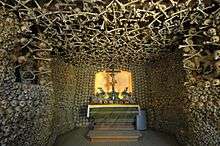
One emerging area of special interest has been identified by Lennon and Foley (2000)[89][90] as "dark" tourism. This type of tourism involves visits to "dark" sites, such as battlegrounds, scenes of horrific crimes or acts of genocide, for example concentration camps. Its origins are rooted in fairgrounds and medieval fairs.[91]
Philip Stone argues that dark tourism is a way of imagining one's own death through the real death of others.[92] Erik H Cohen introduces the term "populo sites" to evidence the educational character of dark tourism. Popular sites transmit the story of victimized people to visitors. Based on a study at Yad Vashem, the Shoah (Holocaust) memorial museum in Jerusalem, a new term—in populo—is proposed to describe dark tourism sites at a spiritual and population center of the people to whom a tragedy befell. Learning about the Shoah in Jerusalem offers an encounter with the subject which is different from visits to sites in Europe, but equally authentic. It is argued that a dichotomy between "authentic" sites at the location of a tragedy and "created" sites elsewhere is insufficient. Participants' evaluations of seminars for European teachers at Yad Vashem indicate that the location is an important aspect of a meaningful encounter with the subject. Implications for other cases of dark tourism at in populo locations are discussed.[93] In this vein, Peter Tarlow defines dark tourism as the tendency to visit the scenes of tragedies or historically noteworthy deaths, which continue to impact our lives. This issue cannot be understood without the figure of trauma.[94]
Social tourism
Social tourism is making tourism available to poor people who otherwise could not afford to travel for their education or recreation. It includes youth hostels and low-priced holiday accommodation run by church and voluntary organisations, trade unions, or in Communist times publicly owned enterprises. In May 1959, at the second Congress of Social Tourism in Austria, Walter Hunziker proposed the following definition: "Social tourism is a type of tourism practiced by low-income groups, and which is rendered possible and facilitated by entirely separate and therefore easily recognizable services".[95]
Doom tourism
Also known as "Tourism of Doom," or "Last Chance Tourism" this emerging trend involves traveling to places that are environmentally or otherwise threatened (such as the ice caps of Mount Kilimanjaro, the melting glaciers of Patagonia, or the coral of the Great Barrier Reef) before it is too late. Identified by travel trade magazine Travel Age West[96] editor-in-chief Kenneth Shapiro in 2007 and later explored in The New York Times,[97] this type of tourism is believed to be on the rise. Some see the trend as related to sustainable tourism or ecotourism due to the fact that a number of these tourist destinations are considered threatened by environmental factors such as global warming, overpopulation or climate change. Others worry that travel to many of these threatened locations increases an individual's carbon footprint and only hastens problems threatened locations are already facing.[98][99][100][101][102]
Religious tourism
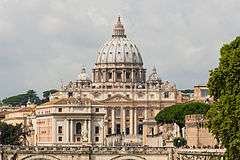
Religious tourism, in particular pilgrimage, can serve to strengthen faith and to demonstrate devotion - both of which are central tenets of many major religions.[103] Religious tourists may seek destinations whose image encourages them to believe that they can strengthen the religious elements of their self-identity in a positive manner. Given this, the perceived image of a destination may be positively influenced by whether it conforms to the requirements of their religious self-identity or not.[104]
DNA tourism
DNA tourism, also called "ancestry tourism" or "heritage travel", is tourism based on DNA testing. DNA tourists visit their remote relatives or places where their ancestors came from, or where their relatives reside, based on the results of DNA tests. According to the media, DNA testing has become a growing trend in 2019.[105][106]
Impacts
Tourism fatigue
Excessive hordes of visitors (or of the wrong sort of visitors) can provoke backlashes from otherwise friendly hosts in popular destinations.[107]
Negative environmental consequences
Negative environmental consequences related to tourism activities, such as greenhouse gas emissions from air travel, and litter at popular locations, can be significant.[108]
Illegal activities
Tourism is sometimes associated with export or theft of contraband such as endangered species or certain cultural artifacts, and illegal sex trade activities.[109]
Anti-tourism sentiment and mobilization
In the last years, there are many places in the world that the local population develops an anti-tourism sentiment and protests against tourists. One of the most prominent examples of such a mobilization was the so-called "Tourists go home" movement, which emerged in 2014 in Spain due to the slogans and mottos calling the tourists to go back to their homes. Barcelona, as one of the most visited cities of the globe, has millions of tourists per year. The irresponsible behavior of the tourists in association with the overpopulation, usually during the summer months, caused the rage of the local population against the tourists. Besides, citizens also tend to blame platforms such as Airbnb for raising the renting prices and promoting the tourism industry, making it difficult for the citizens to find an inexpensive place to live.[110] Venice was also facing such problems, and the "Tourists go home" slogans appeared on the walls of the city.[111] Moreover, several other countries, such as Japan and the Philippines, are having problems with overtourism.[112][113] Nevertheless, the year 2017 seems to a landmark for the anti-tourism sentiment as "a new Spanish social movement against an economic development model based on mass tourism gained following high-profile attacks targeting foreign tourists and local business interests."[114] The anti-tourism sentiment also seems to be linked with a clash of identity and people's individualism.[115]
Growth
The World Tourism Organization (UNWTO) forecasts that international tourism will continue growing at the average annual rate of 4%.[116] With the advent of e-commerce, tourism products have become prominent traded items on the internet.[117][118] Tourism products and services have been made available through intermediaries, although tourism providers (hotels, airlines, etc.), including small-scale operators, can sell their services directly.[119][120] This has put pressure on intermediaries from both on-line and traditional shops.
It has been suggested there is a strong correlation between tourism expenditure per capita and the degree to which countries play in the global context.[121] Not only as a result of the important economic contribution of the tourism industry, but also as an indicator of the degree of confidence with which global citizens leverage the resources of the globe for the benefit of their local economies. This is why any projections of growth in tourism may serve as an indication of the relative influence that each country will exercise in the future.

Space tourism
There has been a limited amount of orbital space tourism, with only the Russian Space Agency providing transport to date. A 2010 report into space tourism anticipated that it could become a billion-dollar market by 2030.[122]
Sports tourism
Since the late 1980s, sports tourism has become increasingly popular. Events such as rugby, Olympics, Commonwealth Games, and FIFA World Cups have enabled specialist travel companies to gain official ticket allocation and then sell them in packages that include flights, hotels and excursions.
Trends since 2000
As a result of the late-2000s recession, international arrivals experienced a strong slowdown beginning in June 2008. Growth from 2007 to 2008 was only 3.7% during the first eight months of 2008. This slowdown on international tourism demand was also reflected in the air transport industry, with negative growth in September 2008 and a 3.3% growth in passenger traffic through September. The hotel industry also reported a slowdown, with room occupancy declining. In 2009 worldwide tourism arrivals decreased by 3.8%.[123] By the first quarter of 2009, real travel demand in the United States had fallen 6% over six quarters. While this is considerably milder than what occurred after the 9/11 attacks, the decline was at twice the rate, as real GDP has fallen.[124][125]
In 2020 COVID-19 pandemic lock-downs, travel bans and a substantial reduction in passenger travel by air and sea contributed to a sharp decline in tourism activity.
However, evidence suggests that tourism as a global phenomenon shows no signs of substantially abating in the long term. It has been suggested that travel is necessary in order to maintain relationships, as social life is increasingly networked and conducted at a distance.[126] Many people increasingly view vacations and travel as a necessity rather than a luxury, and this is reflected in tourist numbers recovering some 6.6% globally over 2009, with growth up to 8% in emerging economies.[123]
See also
- Outline of tourism – 1=Overview of and topical guide to tourism
- Business tourism – Type of tourism
- Cultural travel
- International tourism advertising
- Science tourism – Travel to notable science locations
- Scuba diving tourism – Industry based on recreational diver travel
- Sex tourism – Travel to engage in sexual activity
- Tour guide – Person who provides information and heritage interpretation to tourists
- Travel agency
- Visa policy
- Medical tourism – People traveling abroad to obtain medical treatment
- Tourism industry
- World Tourism rankings
References
- Rachel Sugar (19 December 2016). "More tourists visited NYC in 2016 than ever before". Vox Media. Retrieved 24 April 2018.
- "tourism". Oxford English Dictionary (3rd ed.). Oxford University Press. September 2005. (Subscription or UK public library membership required.)
- "UNWTO technical manual: Collection of Tourism Expenditure Statistics" (PDF). World Tourism Organization. 1995. p. 10. Archived from the original (PDF) on 22 September 2010. Retrieved 26 March 2009.
- "International tourism challenged by deteriorating global economy" (PDF). UNWTO World Tourism Barometer. 7 (1). January 2009. Archived from the original (PDF) on 17 October 2013. Retrieved 17 November 2011.
- "UNWTO World Tourism Barometer Interim Update" (PDF). UNWTO World Tourism Barometer. August 2010. Archived from the original (PDF) on 17 October 2013. Retrieved 17 November 2011.
- UNWTO Tourism Highlights: 2017 Edition. World Tourism Organization (UNWTO). 1 July 2017. doi:10.18111/9789284419029. ISBN 978-92-844-1902-9.
- "UNWTO World Tourism Barometer" (PDF). UNWTO World Tourism Barometer. 11 (1). January 2013. Archived from the original (PDF) on 28 February 2013. Retrieved 9 April 2013.
- "China – the new number one tourism source market in the world". World Tourism Organization. 4 April 2013. Retrieved 9 April 2013.
- "ITB Berlin: The World's Leading Travel Trade Show". www.expodatabase.com. M+A Expo Database. Retrieved 13 September 2016.
-
Lenzen, Manfred; Sun, Ya-Yen; Faturay, Futu; Ting, Yuan-Peng; Geschke, Arne; Malik, Arunima (7 May 2018). "The carbon footprint of global tourism". Nature Climate Change. Springer Nature Limited. 8 (6): 522–528. doi:10.1038/s41558-018-0141-x. ISSN 1758-6798.
[...] between 2009 and 2013, tourism's global carbon footprint has increased from 3.9 to 4.5 GtCO2e, four times more than previously estimated, accounting for about 8% of global greenhouse gas emissions. Transport, shopping and food are significant contributors. The majority of this footprint is exerted by and in high-income countries.
- Griffiths, Ralph; Griffiths, G.E. (1772). "Pennant's Tour in Scotland in 1769". The Monthly Review, Or, Literary Journal. 46: 150. Retrieved 23 December 2011.
- Harper, Douglas. "tour (n.)". Online Etymology Dictionary. Retrieved 23 December 2011.
- "Online Etymology Dictionary". etymonline.com. Retrieved 2 June 2016.
- Laurajane Smith "Uses of Heritage" (2006); Regina Bendix, Vladimir Hafstein "Culture and Property. An Introduction" (2009) in Ethnologia Europaea 39/2
- Gerhard Bitzan, Christine Imlinger "Die Millionen-Marke Habsburg" (German), in Die Presse, 15 July 2011.
-
Tassiopoulos, Dimitri (2008). "1: Entrepreneurship and the tourism economy". In Tassiopoulos, Dimitri (ed.). New Tourism Ventures: An Entrepreneurial and Managerial Approach. Cape Town: Juta and Company Ltd. p. 10. ISBN 9780702177262. Retrieved 20 September 2019.
[...] the tourism industry can [...] be regarded as part of the service sector.
- Manila Declaration on World Tourism (PDF). World Tourism Conference. Manila, Philippines. 10 October 1980. pp. 1–4. Archived from the original (PDF) on 20 November 2012.
- "2012 Tourism Highlights" (PDF). UNWTO. June 2012. Archived from the original (PDF) on 9 July 2012. Retrieved 17 June 2012.
-
O'Grady, Alison, ed. (1990). The Challenge of Tourism: Learning Resources for Study and Action. Ecumenical Coalition on Third World Tourism. p. 19. ISBN 9789748555706. Retrieved 20 September 2019.
[...] the products to be sold to international tourists are not only natural resources such as sea, sand and sun, but also the subservience of people in receiving countries.
-
Smith, Melanie K. (2003). Issues in Cultural Tourism Studies. Tourism / Routledge. London: Routledge. p. 50. ISBN 978-0-415-25638-4. Retrieved 30 May 2018.
The globalisation of tourism has partially exacerbated the relationships of inequality and subservience that are so commonplace in host-guest encounters. It is not simply enough for local people to accept their role as servants, guides or companions to a range of ever-changing tourists. They are also confronted increasingly by the luxurious global products of Western indulgence which remain far from their reach, rather like the thirsty Tantalus in his elusive pool of water.
- On the Hunt for the Northern Lights
- Theobald, William F. (1998). Global Tourism (2nd ed.). Oxford [England]: Butterworth–Heinemann. pp. 6–7. ISBN 978-0-7506-4022-0. OCLC 40330075.
- Hunziker, W; Krapf, K (1942). Grundriß Der Allgemeinen Fremdenverkehrslehre (in German). Zurich: Polygr. Verl. OCLC 180109383.
- Spode, Hasso (1998). "Geschichte der Tourismuswissenschaft". In Haedrich, Günther (ed.). Tourismus-management: Tourismus-marketing Und Fremdenverkehrsplanung (in German). Berlin: [u.a.] de Gruyter. ISBN 978-3-11-015185-5. OCLC 243881885.
- Beaver, Allan (2002). A Dictionary of Travel and Tourism Terminology. Wallingford: CAB International. p. 313. ISBN 978-0-85199-582-3. OCLC 301675778.
- International Association of Scientific Experts in Tourism. "The AIEST, its character and aims". Archived from the original on 26 November 2011. Retrieved 29 March 2008.
- "Recommendations on Tourism Statistics" (PDF). Statistical Papers. M (83): 5. 1994. Retrieved 12 July 2010.
- "ww.oicstatcom.org" (PDF).
- Edensor, Tim (1998). Tourists at the Taj: Performance and Meaning at a Symbolic Site. Psychology Press. ISBN 978-0-415-16712-3.
- International Tourism Highlights. UNWTO. 2019. doi:10.18111/9789284421152. ISBN 9789284421152.
- "Member States – Regional Programme for Europe".
- "World's most visited cities". CNN. 3 December 2018.
- "Top 100 City Destinations Ranking". Euromonitor International. 27 December 2018.
- "Countries Showing Strong International Travel and Tourism Growth" (PDF).
- "Which Countries Performed Best In 2016?" (PDF). p. 7.
- Jayapalan, N. (2001). Introduction To Tourism. Atlantic Publishers & Dist. ISBN 978-81-7156-977-9.
- Casson, Lionel (1994). Travel in the Ancient World. Baltimore: Johns Hopkins University Press. p. 32.
- Hargett, James (1985). "Some Preliminary Remarks on the Travel Records of the Song Dynasty (960-1279)". Chinese Literature: Essays, Articles, Reviews. 7: 67. doi:10.2307/495194. JSTOR 495194.
- Deschaux, Robert; Taillevent, Michault (1975). Un poète bourguignon du XVe siècle, Michault Taillevent: édition et étude. Librairie Droz. pp. 31–32. ISBN 978-2-600-02831-8.
- Tomasz Bohun, Podróże po Europie, Władysław IV Wasa, Władcy Polski, p. 12
- Adam Kucharski. "Dyplomacja i turystyka – królewicz Władysław Waza w posiadłościach hiszpańskich (1624–1625)". Silva Rerum. Retrieved 7 June 2017.
- The Oxford Illustrated History of Opera, ed. Roger Parker (1994): a chapter on Central and Eastern European opera by John Warrack, p. 240; The Viking Opera Guide, ed. Amanda Holden (1993): articles on Polish composers, p. 174
- Singh, L.K. (2008). "Issues in Tourism Industry". Fundamental of Tourism and Travel. Delhi: Isha Books. p. 189. ISBN 978-81-8205-478-3.
- "History: Centuries of Experience". Cox & Kings. Retrieved 23 December 2011.
- Ingle, R., 1991 Thomas Cook of Leicester, Bangor, Headstart History
- "Thomas Cook History". www.thomascook.com. Retrieved 12 May 2017.
- "Key Dates 1841–2014 | Thomas Cook". www.thomascook.com. Retrieved 12 May 2017.
- Rick Szostak: The Causes of Economic Growth: Interdisciplinary Perspectives. Springer Science & Business Media, 2009, ISBN 9783540922827; Markus Tauschek "Kulturerbe" (2013), p 166; Laurajane Smith "Uses of Heritage" (2006).
- "UNESCO Legal Instruments: Second Protocol to the Hague Convention of 1954 for the Protection of Cultural Property in the Event of Armed Conflict 1999".; Roger O’Keefe, Camille Péron, Tofig Musayev, Gianluca Ferrari "Protection of Cultural Property. Military Manual." UNESCO, 2016, p 73; Action plan to preserve heritage sites during conflict - UNITED NATIONS, 12 Apr 2019
- "Austrian Armed Forces Mission in Lebanon" (in German).; Jyot Hosagrahar: Culture: at the heart of SDGs. UNESCO-Kurier, April-Juni 2017.
- Simon Osborne (27 September 2016). "Don't look now, Venice tourists – the locals are sick of you". The Guardian. Retrieved 10 May 2018.
- "Ccruise News". June 2012. Retrieved 17 December 2012.
- "The Prinzessin Victoria Luise – world's first cruise ship". Cruising the Past. Retrieved 12 August 2018.
- Golden Age of Mass Tourism: Its History and Development, Erkan Sezgin and Medet Yolal, Anadolu University, p. 73
- Golden Age of Mass Tourism: Its History and Development, Erkan Sezgin and Medet Yolal, Anadolu University, p. 74
- Lew, Alan A. (2008). "Long Tail Tourism: New geographies for marketing niche tourism products" (PDF). Journal of Travel & Tourism Marketing. 25 (3–4): 409–19. CiteSeerX 10.1.1.467.6320. doi:10.1080/10548400802508515. Archived from the original (PDF) on 14 June 2010. Retrieved 22 December 2011.
- "Birthplace of winter tourism". Archived from the original on 17 October 2013.
- "Early Winter Tourism". Tradition & History. St. Moritz: Kulm Hotel. Archived from the original on 19 December 2011. Retrieved 23 December 2011.
- "Winter hiking in Switzerland-Graubünden". graubuenden.ch. Retrieved 23 December 2011.
- Swine flu prompts EU warning on travel to US. The Guardian. 28 April 2009.
- "India Top Tourist Destinations & Attractions". TravelCupio. Retrieved 9 April 2017.
- Marx, Patricia. "Couch-surfing the globe". The New Yorker. Retrieved 15 March 2014.
- Cadene, Philippe (2013). Atlas of the Gulf States. p. 29.
- "Sustainable Tourism: Turning the Tide" (PDF). Towards Earth Summit 2002. Stakeholder Forum for a Sustainable Future. August 2002. Retrieved 22 January 2012.
- "Resolution adopted by the General Assembly". 42/187. Report of the World Commission on Environment and Development. The Conference of NGOs. 11 December 1987. Retrieved 21 January 2012.
- Clare., Inkson (2012). Tourism management : an introduction. Minnaert, Lynn. Los Angeles: Sage. ISBN 978-1-84860-869-6. OCLC 760291882.
- Vujko, Aleksandra; Plavša, Jovan; Petrović, Marko; Radovanović, Milan; Gajić, Tamara (13 March 2017). "Modelling of carrying capacity in National Park – Fruška Gora (Serbia) case study". Open Geosciences. 9 (1): 61–72. doi:10.1515/geo-2017-0005. ISSN 2391-5447.
- Tourism Review International, Volume 8, Number 4, 2005, pp. 323-338(16)
- telegraphindia.com/india/textile-circuit-on-tourist-map/cid/1473289
- Wijaya, Karto; Permana, Asep Yudi (2018). "Textile Tourism Image as an Identity of Cigondewah in Bandung City". Iop Conference Series: Earth and Environmental Science. 213 (1): 012012. Bibcode:2018E&ES..213a2012W. doi:10.1088/1755-1315/213/1/012012.
- "Morgan Gamble". Pinterest. Retrieved 9 June 2015.
- Entrepreneuring Sustainable Tourism, Jack Soifer Editor, Lisboa, 2008, ISBN 978-989-95976-0-0
- Volunteer Tourism: Experiences That Make a Difference. CABI.
- Butcher, J; Smith, P (2010). "'Making a difference': Volunteer tourism and development" (PDF). Tourism Recreation Research. 35: 27–36. doi:10.1080/02508281.2010.11081616.
- Terry, W (2014). "Solving labor problems and building capacity unsustainable agriculture through volunteer tourism". Annals of Tourism Research. 49: 94–107. doi:10.1016/j.annals.2014.09.001.
- Guttentag, D (2009). "The possible negative impacts of volunteer tourism". International Journal of Tourism Research. 11 (6): 537–51. doi:10.1002/jtr.727.
- Curran, Ross; Taheri, Babak; MacIntosh, Robert; O'Gorman, Kevin (2016). "Nonprofit Brand Heritage: Its Ability to Influence Volunteer Retention, Engagement, and Satisfaction". Nonprofit and Voluntary Sector Quarterly. 45 (6): 1234–57. doi:10.1177/0899764016633532.
- Thompson, Jamie; Curran, Ross; O'Gorman, Kevin (2017). "A modern day panopticon: Using power and control theory to manage volunteer tourists in Bolivia". Tourism Management Perspectives. 22: 34–43. doi:10.1016/j.tmp.2017.01.003. hdl:10373/2606.
- Jonathan Mitchel (2009). "Value chain analysis and poverty reduction at scale". Overseas Development Institute.
- Butler, Richard; Curran, Ross; O'Gorman, Kevin D. (1 September 2013). "Pro-Poor Tourism in a First World Urban Setting: Case Study of Glasgow Govan". International Journal of Tourism Research. 15 (5): 443–57. doi:10.1002/jtr.1888. ISSN 1522-1970.
- Neuman, William (17 February 2015). "Americans May See Appeal of Medical Tourism in Cuba". The New York Times. ISSN 0362-4331. Retrieved 12 September 2016.
- "Evolving medical tourism in Canada | Deloitte Canada". Deloitte Canada. Retrieved 12 September 2016.
- Wurzburger, Rebecca; et al. (2009). Creative Tourism: A Global Conversation: How to Provide Unique Creative Experiences for Travelers Worldwide: As Presented at the 2008 Santa Fe & UNESCO International Conference on Creative Tourism in Santa Fe, New Mexico, USA. Santa Fe: Sunstone Press. ISBN 978-0-86534-724-3. OCLC 370387178.
- UNESCO. "Towards Sustainable Strategies for Creative Tourism: discussion report of the planning meeting for the 2008 International Conference on Creative Tourism". programme and meeting document.
- Lau, Samantha (14 November 2016). "Legislative Council of the Hong Kong Special Administrative Region – Creative tourism". Legislative Council of Hong Kong.
- Charlie Mansfield Lecturer in Tourism Management and French. "JTCaP Tourism Consumption Online Journal". Tourismconsumption.org. Archived from the original on 15 April 2013. Retrieved 10 August 2013.
- Bellafante, Ginia (6 July 2012). "Your Home, the New Frontier for Tourists in New York City" – via NYTimes.com.
- Gattorna, John (1985). Insights in Strategic Retail Management. ISBN 9780861762378. Retrieved 9 June 2015.
- Quinion, Michael (26 November 2005). "Dark Tourism". World Wide Words. Retrieved 9 April 2010.
- Lennon, J. John; Foley, Malcolm (2000). Dark Tourism. London: Continuum. ISBN 978-0-8264-5063-0. OCLC 44603703.
- Cooper, Chris; et al. (2005). Tourism: Principles and Practice (3rd ed.). Harlow: Pearson Education. ISBN 978-0-273-68406-0. OCLC 466952897.
- Stone, Philip R. (1 July 2012). "Dark tourism and significant other death: Towards a Model of Mortality Mediation". Annals of Tourism Research. 39 (3): 1565–87. doi:10.1016/j.annals.2012.04.007.
- Cohen, Erik H. (1 January 2011). "Educational dark tourism at an in populo site: The Holocaust Museum in Jerusalem". Annals of Tourism Research. 38 (1): 193–209. doi:10.1016/j.annals.2010.08.003.
- Novelli, Marina (2007). Niche Tourism. Routledge. ISBN 978-1-136-37617-7.
- R., Goeldner, Charles (2009). Tourism : principles, practices, philosophies. Ritchie, J.R. Brent. (Eleventh ed.). Hoboken, N.J.: John Wiley. ISBN 978-0-470-38213-4. OCLC 261135450.
- Shapiro, Kenneth (11 May 2007). "TravelAge West – TravelAge West". Travelagewest.com. Retrieved 30 October 2012.
- Salkin, Allen (16 December 2007). "'Tourism of doom' on rise". Nytimes.com. Retrieved 30 October 2012.
- Lemelin, H., Dawson, J., & Stewart, E.J. (Eds.). (2013). Last chance tourism: adapting tourism opportunities in a changing world. Routledge.
- Frew, E. (2008). Climate change and doom tourism: Advertising destinations 'before they disappear'. In J. Fountain & K. Moore (Chair), Symposium conducted at the meeting of the New Zealand Tourism & Hospitality Research Conference.
- Tsiokos, C. (2007). Doom tourism: While supplies last. Population Statistics.
- Hall, C.M. (2010). Crisis events in tourism: subjects of crisis in tourism. Current Issues in Tourism, 13(5), 401–17.
- Olsen, D.H., Koster, R.L., & Youroukos, N. (2013). 8 Last chance tourism?. Last Chance Tourism: Adapting Tourism Opportunities in a Changing World, 105.
- Jafari, Jafar; Scott, Noel (1 January 2014). "Muslim world and its tourisms" (PDF). Annals of Tourism Research. 44: 1–19. doi:10.1016/j.annals.2013.08.011.
-
Compare:
Gannon, Martin Joseph; Baxter, Ian W.F.; Collinson, Elaine; Curran, Ross; Farrington, Thomas; Glasgow, Steven; Godsman, Elliot M.; Gori, Keith; Jack, Gordon R.A. (11 June 2017). "Travelling for Umrah: destination attributes, destination image, and post-travel intentions" (PDF). The Service Industries Journal. 37 (7–8): 448–65. doi:10.1080/02642069.2017.1333601. ISSN 0264-2069.
The result from the structural model suggests that destination attributes influence perceived destination image. Further, such tourists are likely to revisit or recommend Islamic destinations if their experience matches their perceived image of the destination. This implies that, while the religious characteristics of the destination remain important, destination managers cannot disregard the tangential, non-religious attributes of a destination which are crucial in order to satisfy more conventional tourist desires.
- "Why DNA tourism may be the big travel trend of 2019". NBC News. Retrieved 7 October 2019.
- Okona, Nneka M. (18 September 2019). ""Heritage travel" is surging in the era of DNA testing. It has a special significance for black Americans". Vox. Retrieved 7 October 2019.
-
CAF Seminar on Africa and Global Tourism Prospects to the Year 2020: Challenges and Opportunities. World Tourism Organization seminar proceedings. Organización Mundial del Turismo. 1998. p. 124. ISBN 978-92-844-0279-3. Retrieved 20 December 2018.
Mauritius has not been affected by Tourism Fatigue, that is workers tired of smiling or serious environmental degradation.
- "Why Tourism Should Die—and Why It Won't". Chuck Thompson. The New Republic.
- Biagi, Bianca, and Claudio Detotto. "Crime as tourism externality." Regional Studies 48.4 (2014): 693-709.
- Karyotakis, Minos-Athanasios; Kiourexidou, Matina; Antonopoulos, Nikos (2019). "Media and YouTube Appeal in Social Movement Mobilization: The Case of Anti-Tourism Incident". Media Watch. 10 (3): 687–701. doi:10.15655/mw/2019/v10i3/49691.
- Fairall, Amy (2 July 2018). ""Tourists Go Home": Unsustainable Travel in Venice". Globalhobo. Retrieved 30 December 2019.
- Mochizuki, Mami (10 October 2019). "Tourist Sites Tackle "Overtourism"". NHK World. Retrieved 30 December 2019.
- Morris, Hugh (13 September 2018). "What's happening in Boracay, the island paradise ruined by tourism?". The Telegraph. Retrieved 30 December 2019.
- Hughes, Neil (2018). "'Tourists go home': anti-tourism industry protest in Barcelona". Social Movement Studies. 17 (4): 474. doi:10.1080/14742837.2018.1468244.
- McCabe, Scott (2005). "Who is a tourist?". Tourist Studies. 5: 85–106. doi:10.1177/1468797605062716.
- "Long-term Prospects: Tourism 2020 Vision". World Tourism. 2004. Archived from the original on 19 June 2004.
- Lock, S. (3 July 2018). "Online travel market - Statistics & Facts". Statista.
- Statista Research Department (23 July 2019). "Digital travel sales worldwide from 2014 to 2020". Statista.
- Lu, Jie; Lu, Zi (1 July 2004). "Development, Distribution and Evaluation of Online Tourism Services in China". Electronic Commerce Research. 4 (3): 221–39. doi:10.1023/B:ELEC.0000027981.81945.2a. ISSN 1389-5753.
- Karanasios, Stan; Burgess, Stephen (1 March 2008). "Tourism and internet adoption: a developing world perspective". International Journal of Tourism Research. 10 (2): 169–82. doi:10.1002/jtr.649. ISSN 1522-1970.
- "airports & tourists". Global Culture. 2007.
- "The Economic Impact of Commercial Space Transportation on the U. S Economy in 2009" (PDF). Federal Aviation Administration. September 2010. p. 11. Retrieved 5 May 2012.
- UNWTO. "UNWTO Tourism Highlights" (PDF). UNWTO. Retrieved 2 May 2012.
- "Impacts of the World Recession and Economic Crisis on Tourism: North America". JournalistsResource.org. Retrieved 22 June 2012
- Ritchie, J.R. Brent; Amaya Molinar, Carlos Mario; Frechtling, Douglas C. (2011). "Impacts of the World Recession and Economic Crisis on Tourism: North America". Journal of Travel Research. 49 (1): 5–15. doi:10.1177/0047287509353193.
- Urry, John (2003). "Social Networks, Travel and Talk". British Journal of Sociology. 54 (2): 155–75. doi:10.1080/0007131032000080186. PMID 12945865.
Bibliography
- Costa, P (1991). "Managing tourism carrying capacity of art cities". The Tourist Review. 46 (4): 8–11. doi:10.1108/eb058076.
- Garlick, S (2002). "Revealing the unseen: Tourism, art and photography". Cultural Studies. 16 (2): 289–305. doi:10.1080/09502380110107599.
- Gartner, W.C. (1993). "Image formation process". Journal of Travel and Tourism Marketing. 2: 191–216. doi:10.1300/j073v02n02_12.
- Hughes, H.L. (1989). "Tourism and the arts". Tourism Management. 10 (2): 97–99. doi:10.1016/0261-5177(89)90050-2.
- Phelps, A (1986). "Holiday destination image: The problem of assessment—an example developed in Minorca". Tourism Management. 7 (3): 168–80. doi:10.1016/0261-5177(86)90003-8.
- Richardson, S.; Crompton, J. (1988). "Cultural variations in perceptions of vacation attributes". Tourism Management. 9 (2): 128–36. doi:10.1016/0261-5177(88)90022-2.
Further reading
- Holder IV, Floyd William (2009). An Empirical Analysis of the State's Monopolization of the Legitimate Means of Movement: Evaluating the Effects of Required Passport use on International Travel (M.P.A. thesis). Texas State University-San Marcos. OCLC 564144593. Docket Applied Research Projects. Paper 308.
- Wilkerson, Chad (2003). "Travel and Tourism: An Overlooked Industry in the U.S. and Tenth District" (PDF). Economic Review. 88 (Third Quarter): 45–72. ISSN 0161-2387. OCLC 295437935.
- Antje Monshausen, Sustainable and development friendly In: D+C Vol.42.2015:4
- Mass Tourism vs. Alternative Tourism
External links
- Wikivoyage – The free, worldwide travel guide that anyone can edit.
- Recreation and Leisure Studies at Curlie
